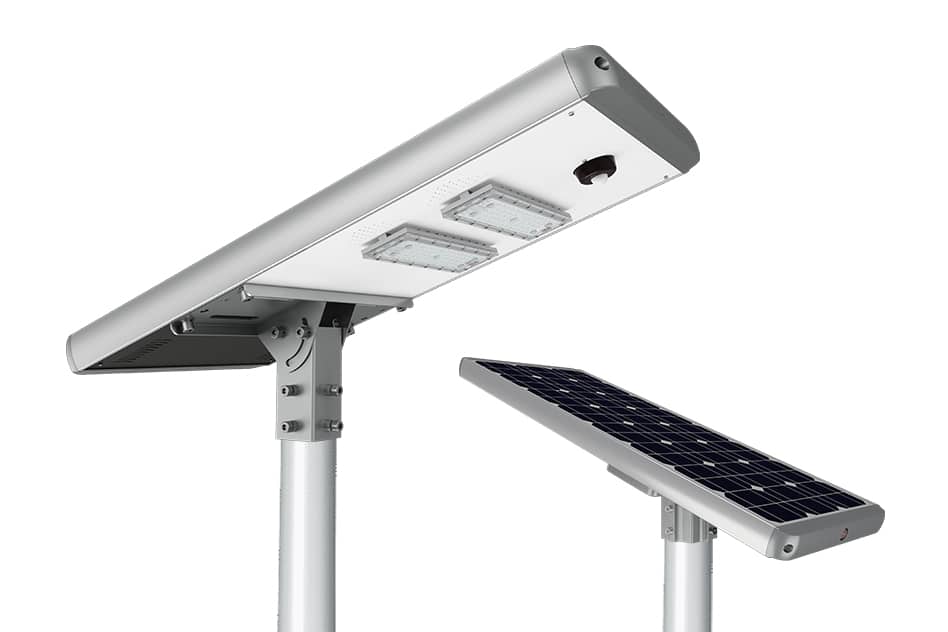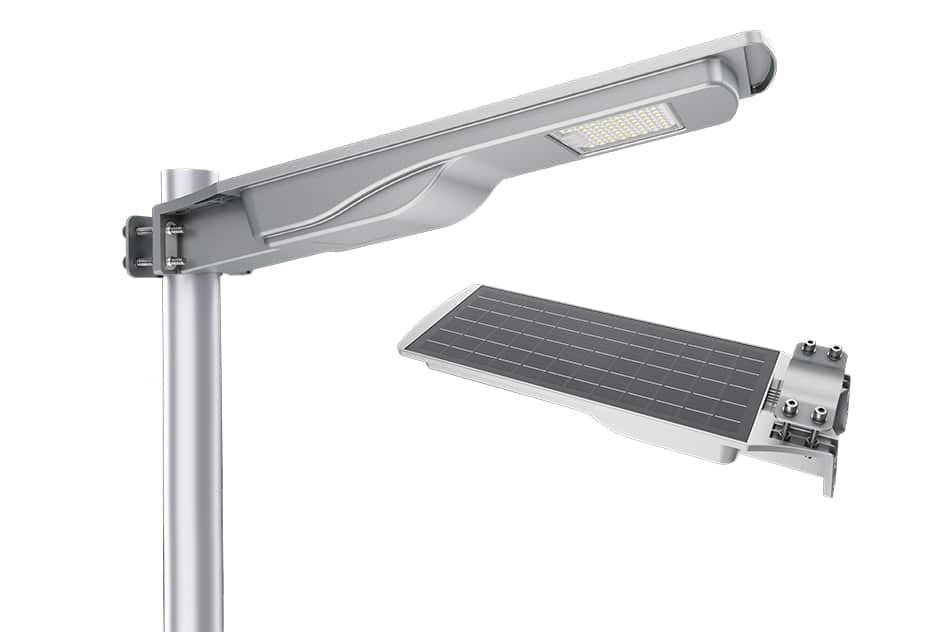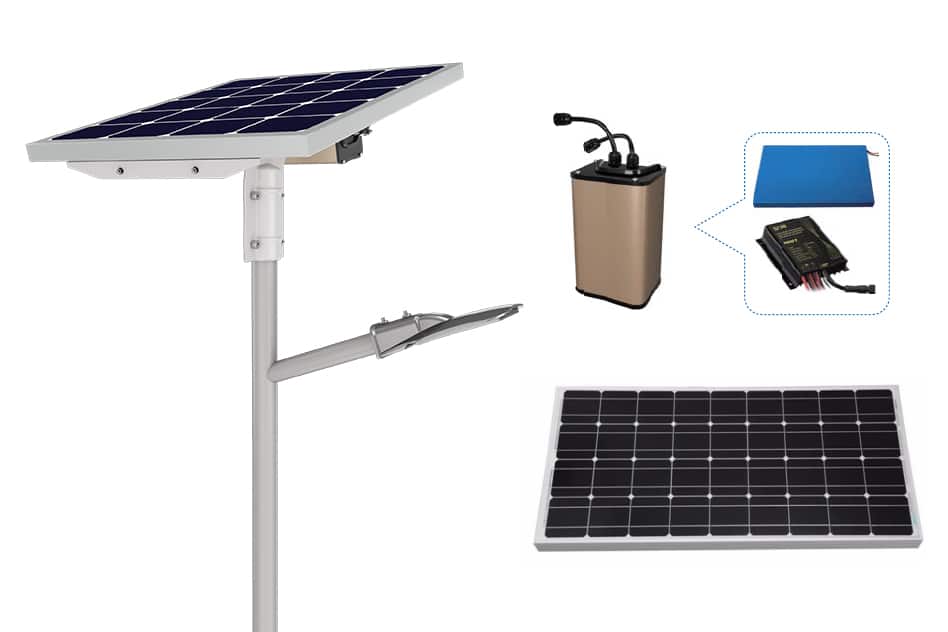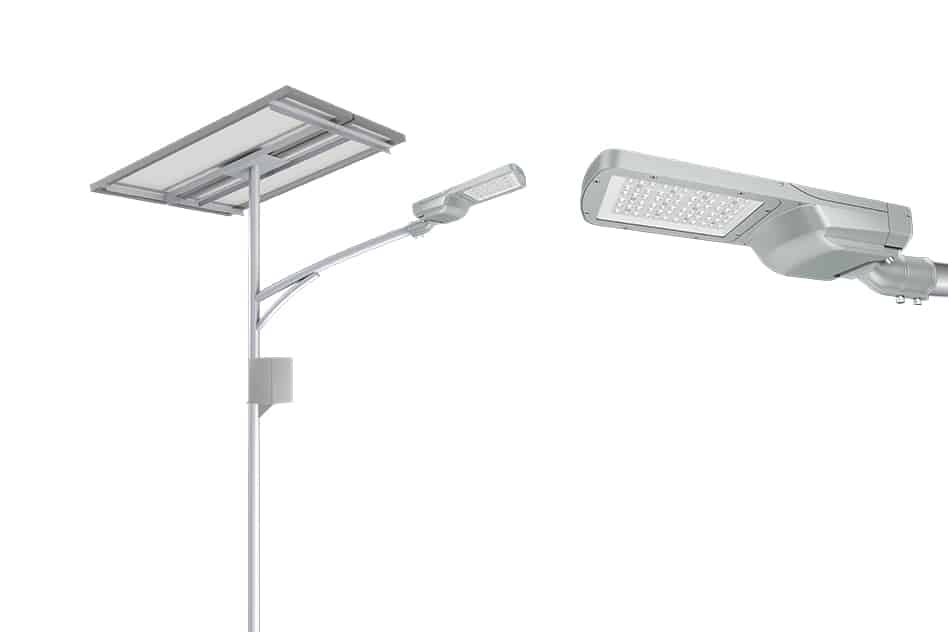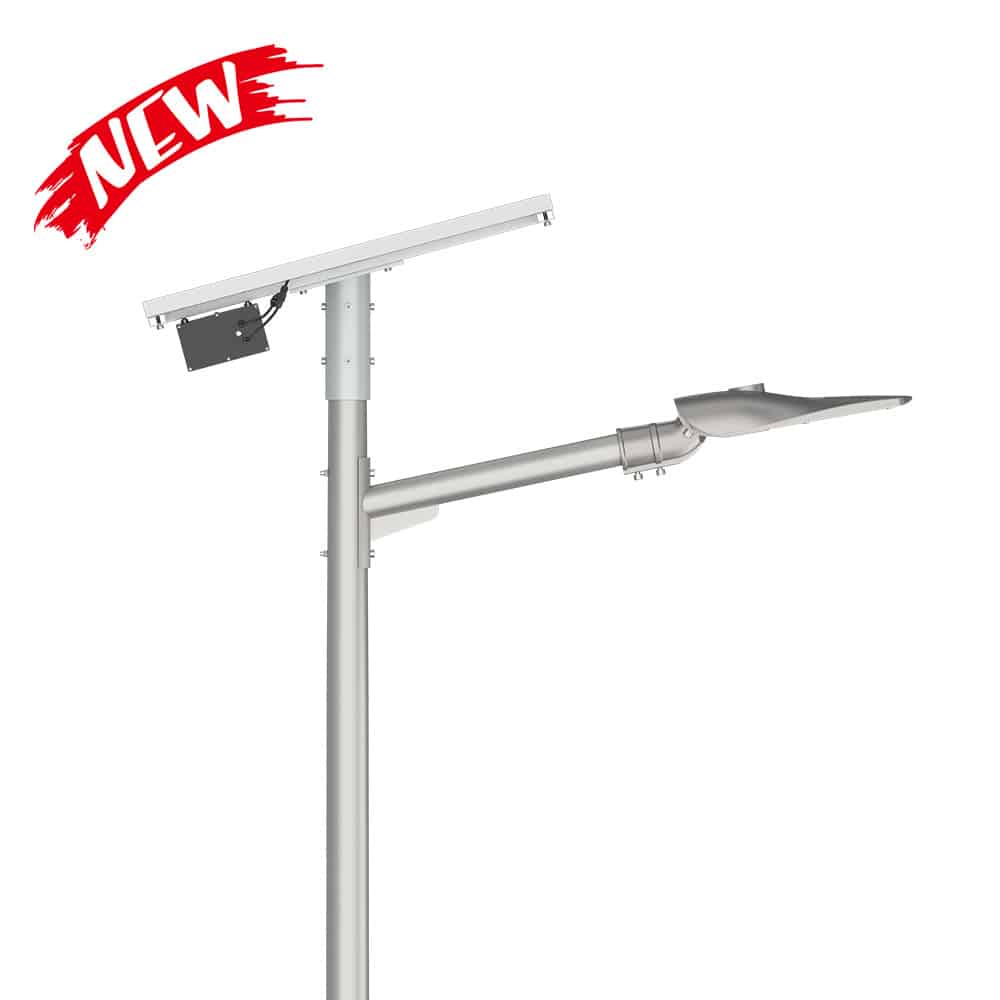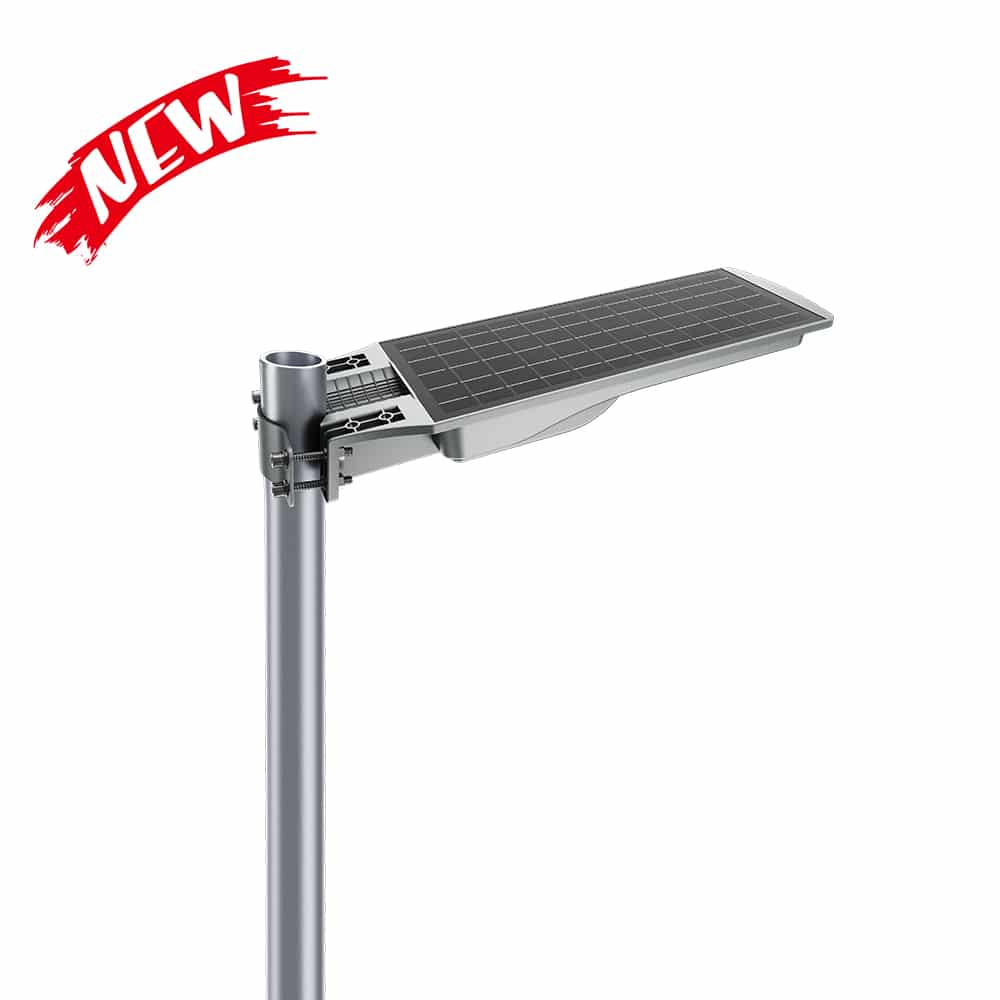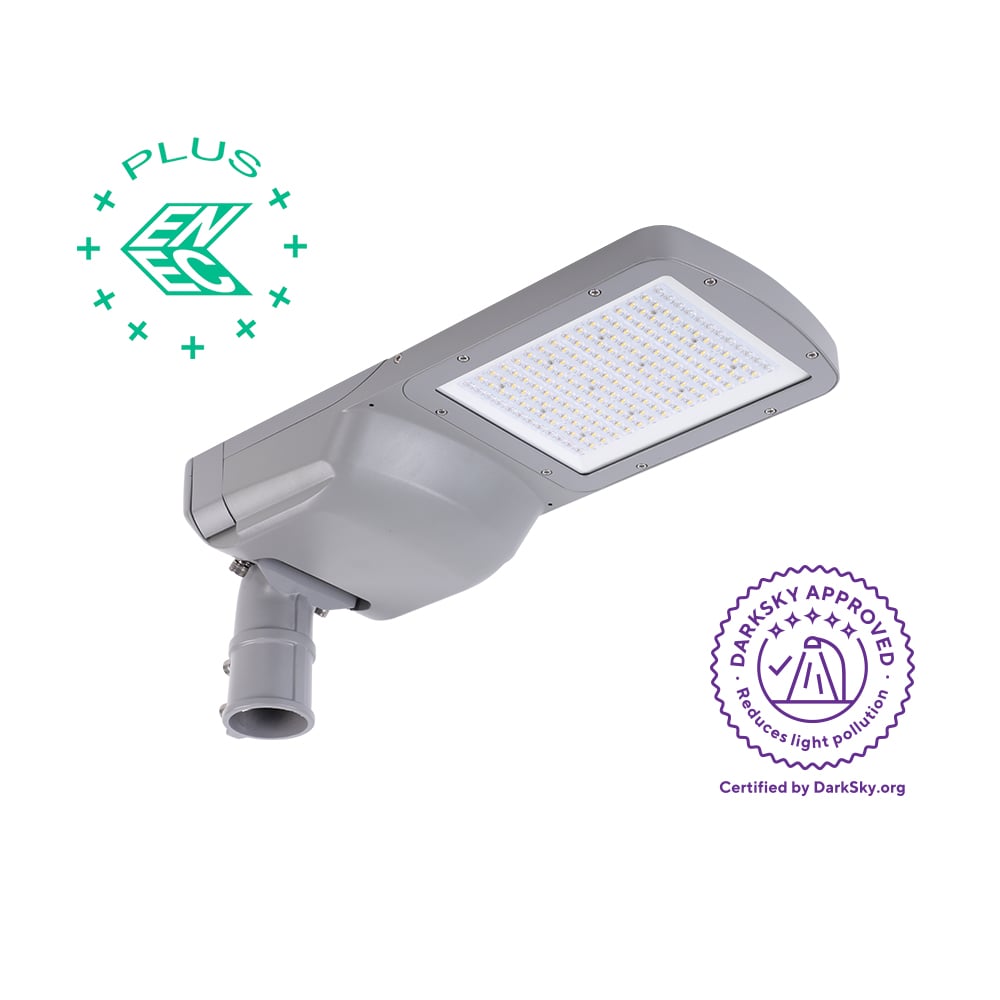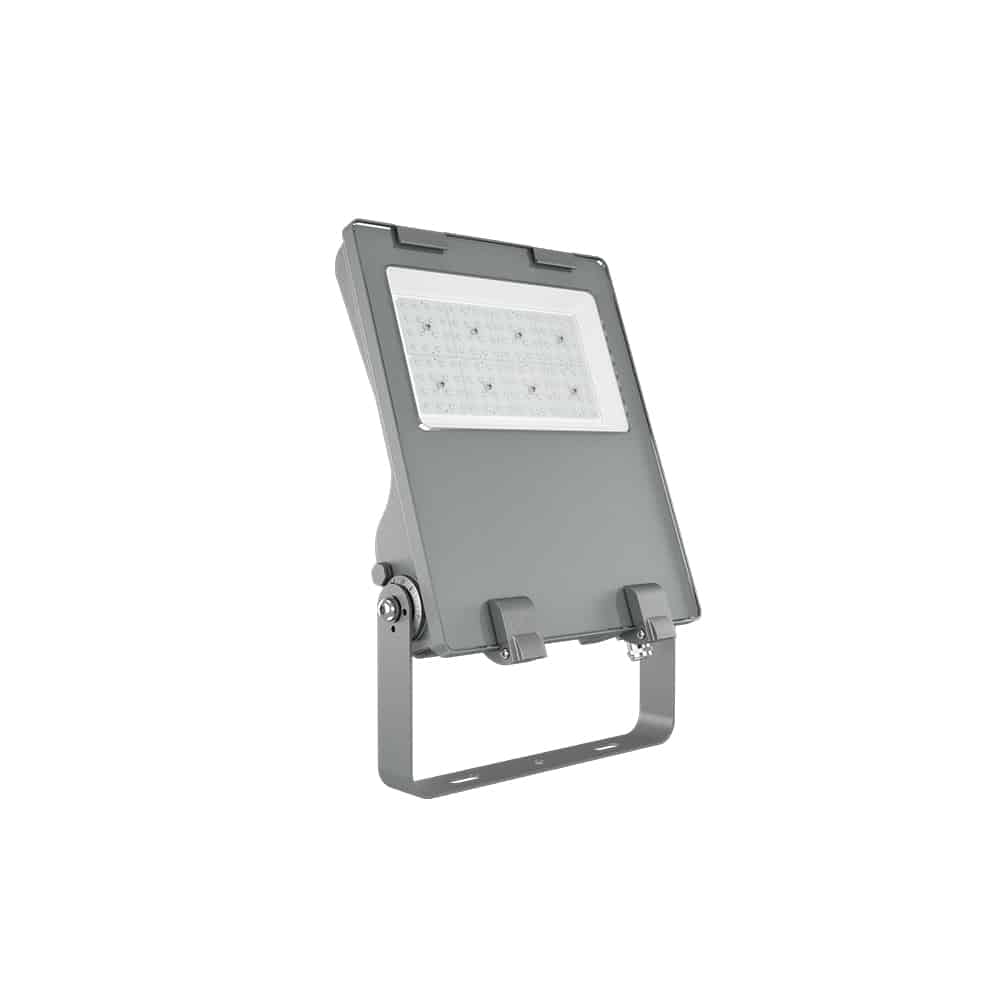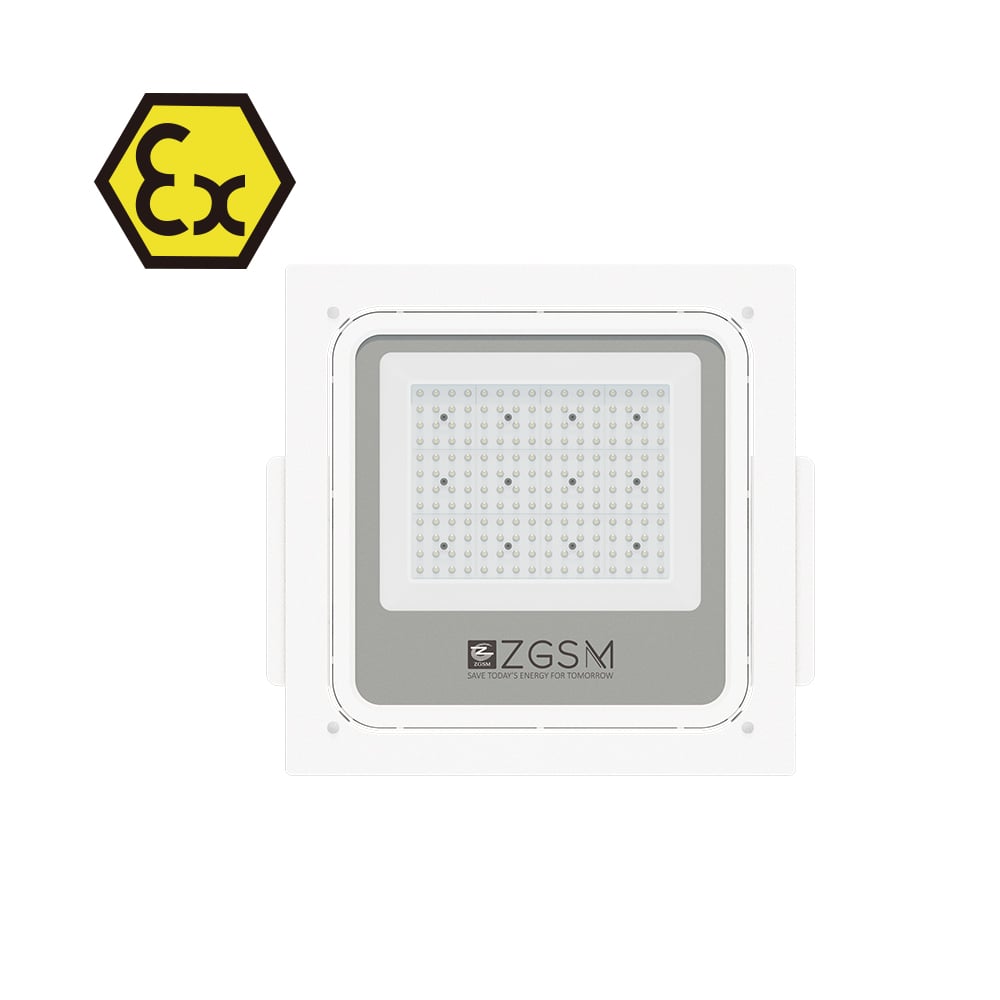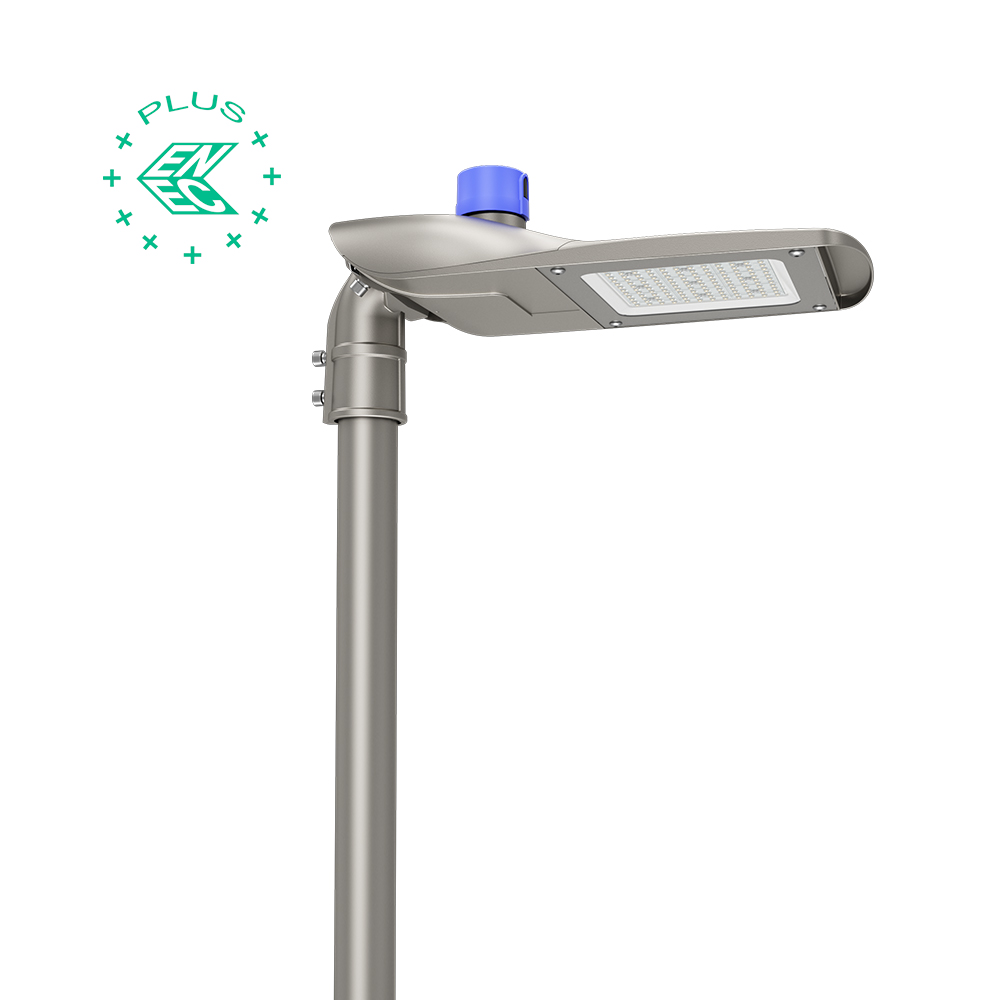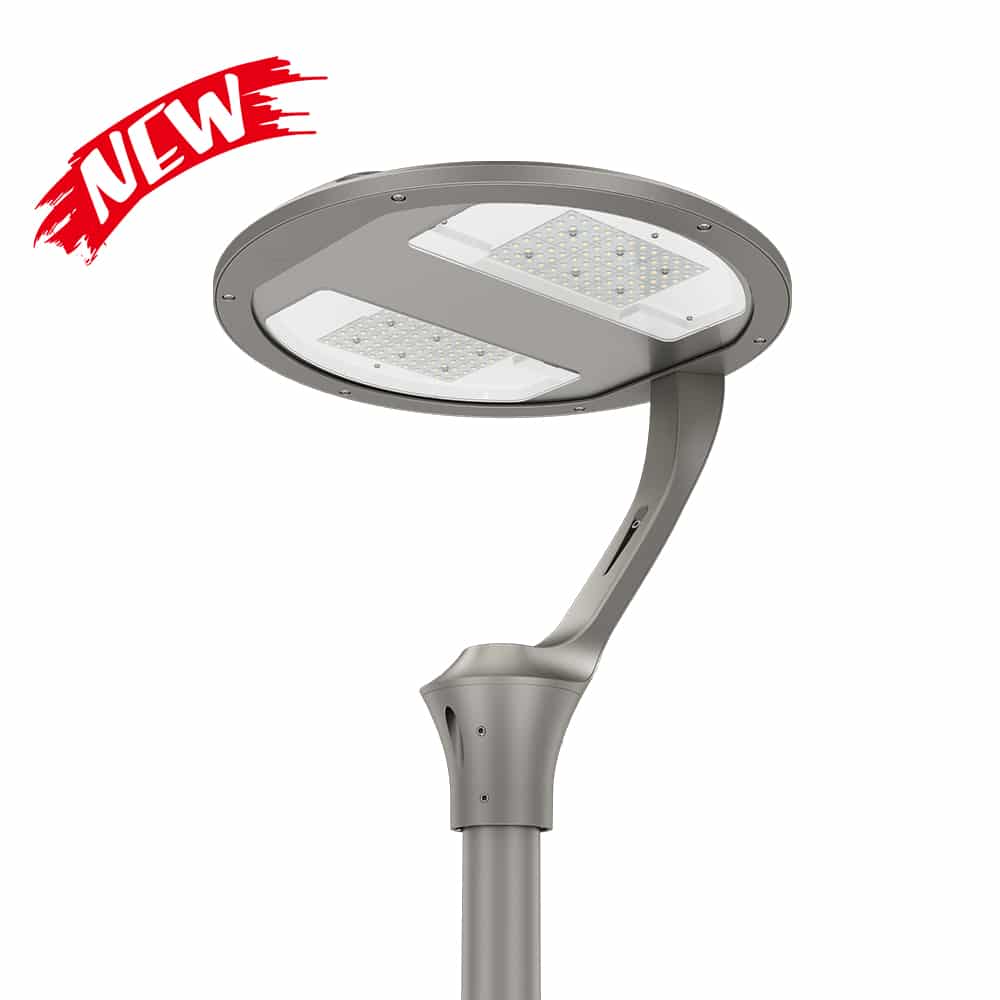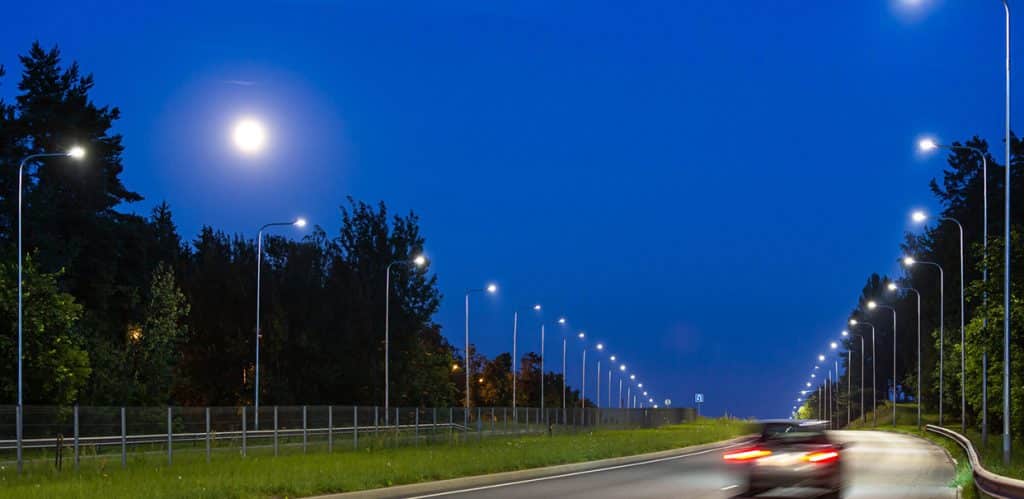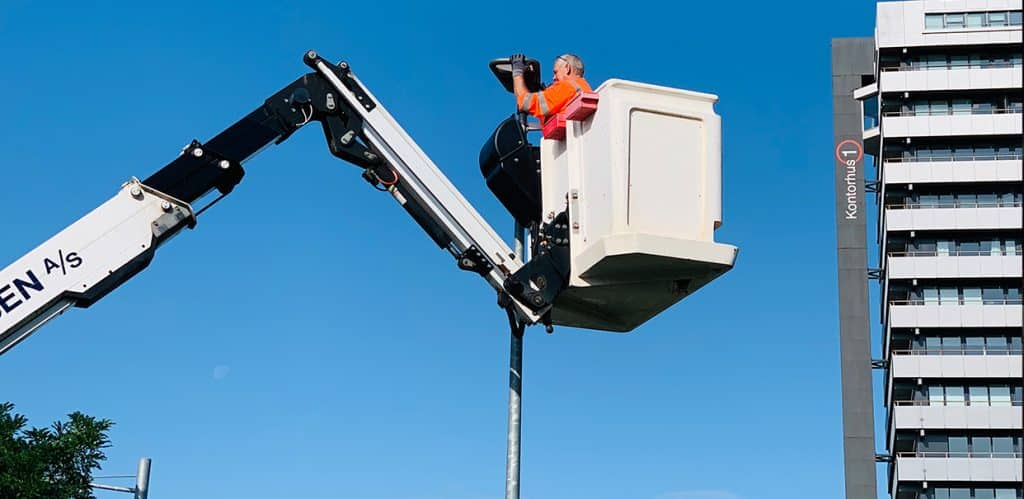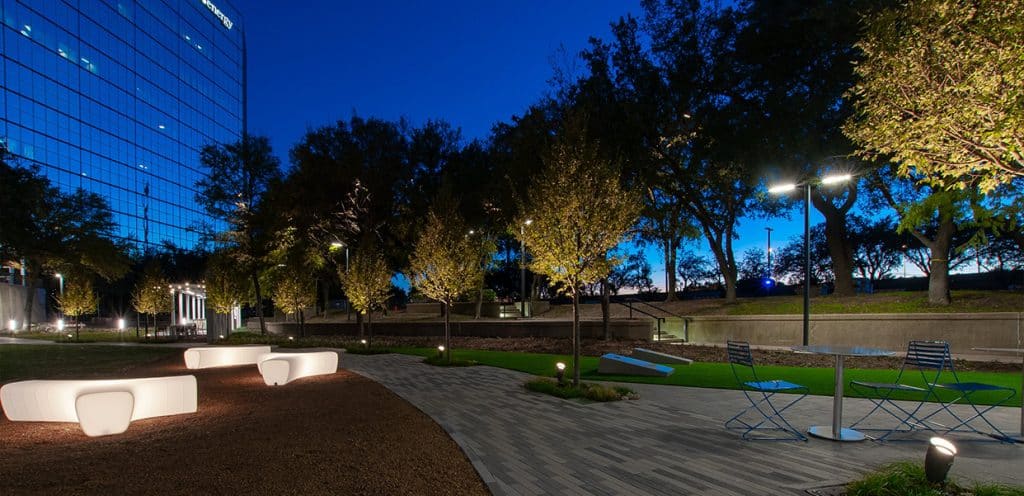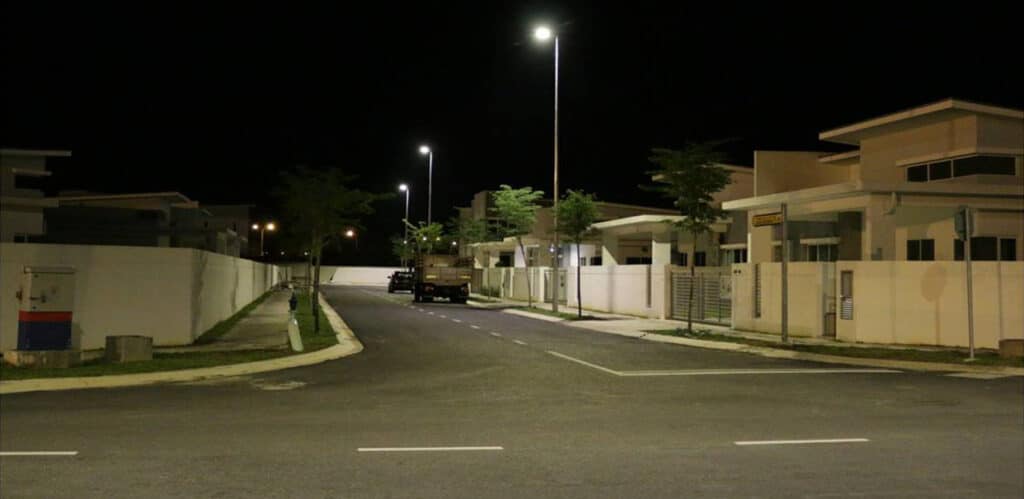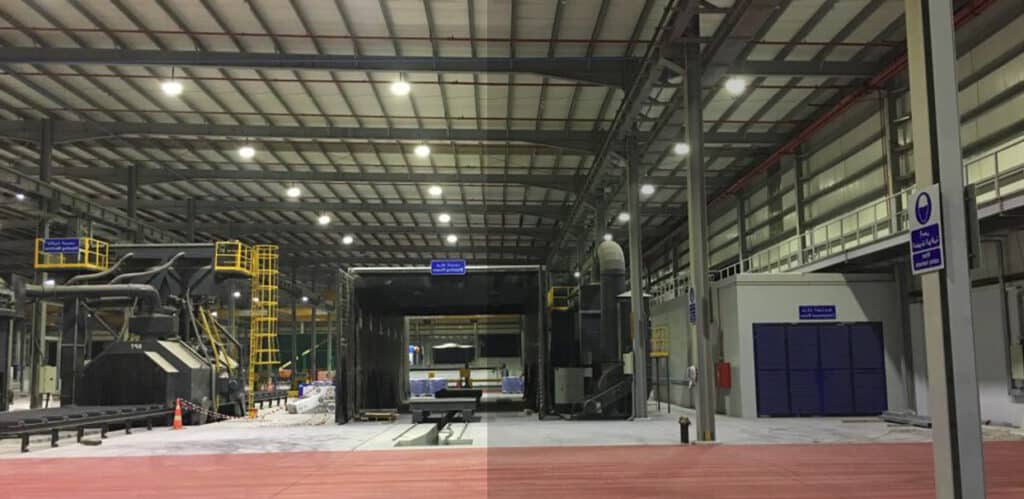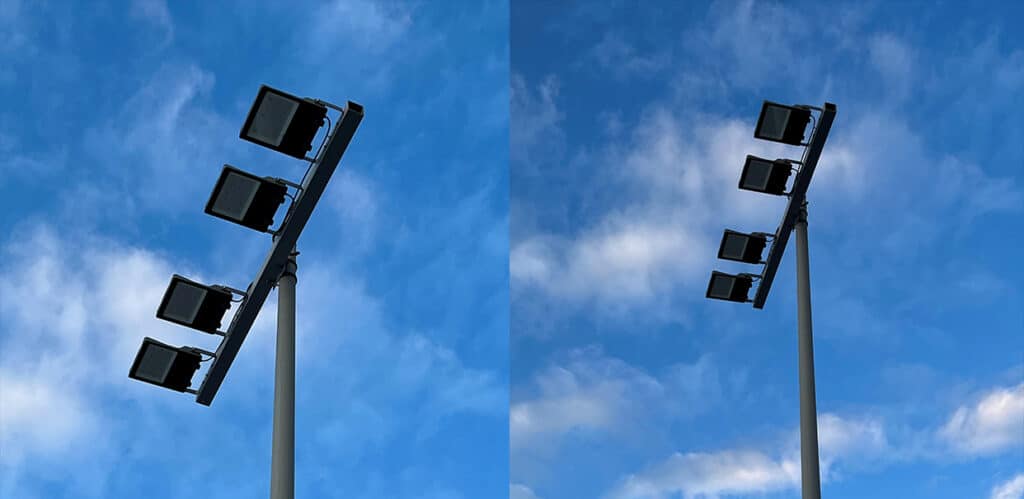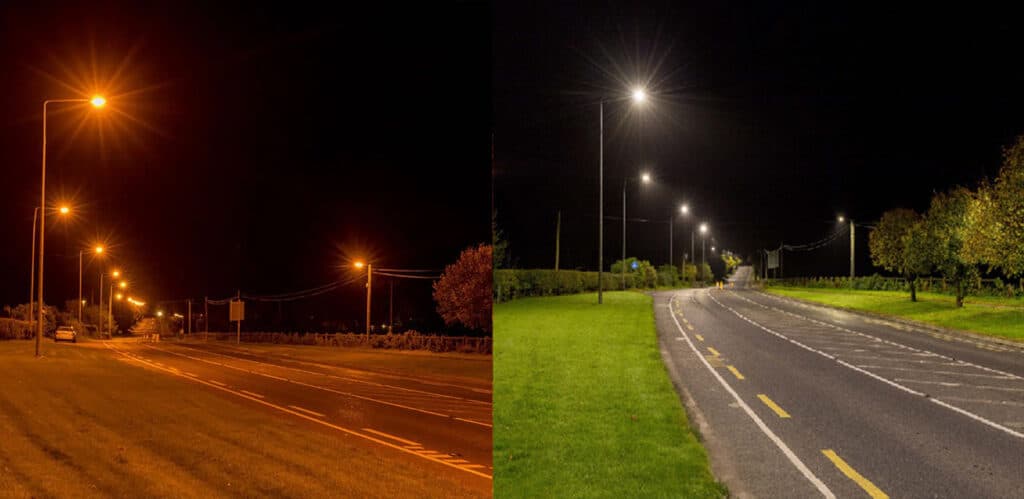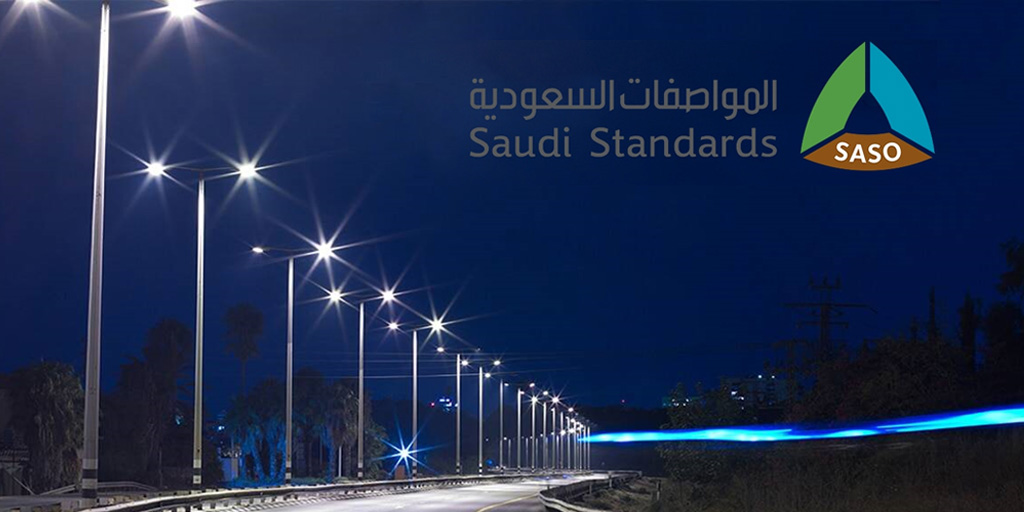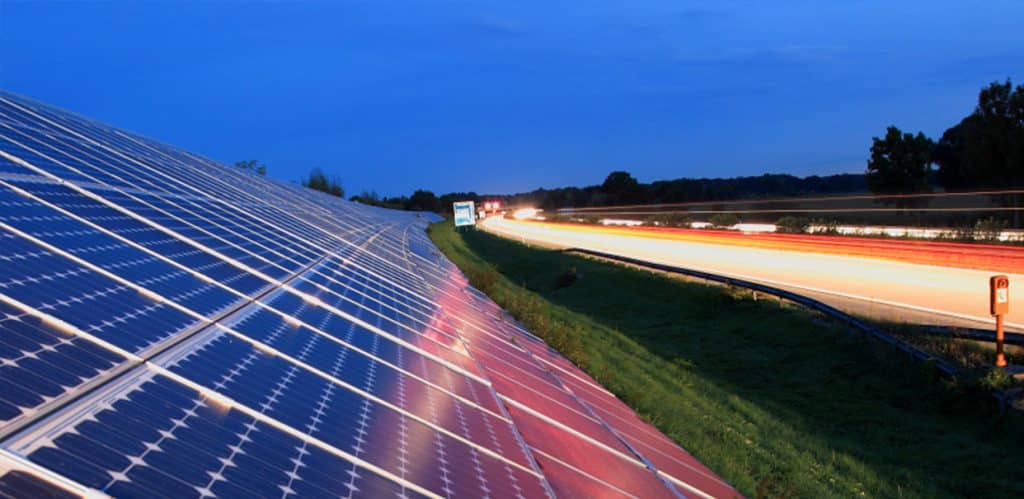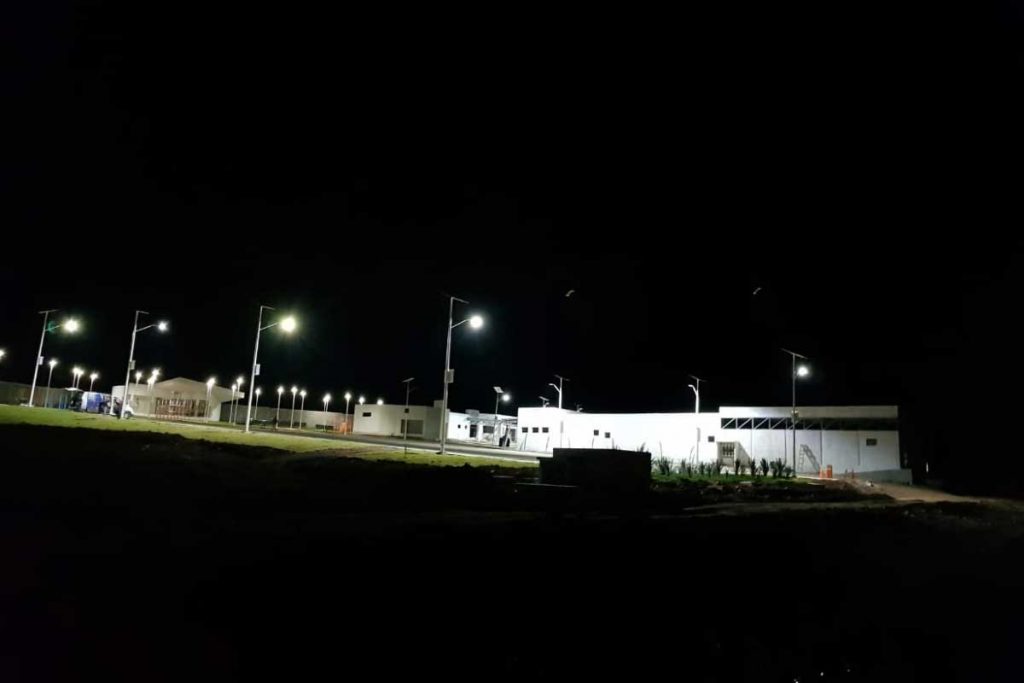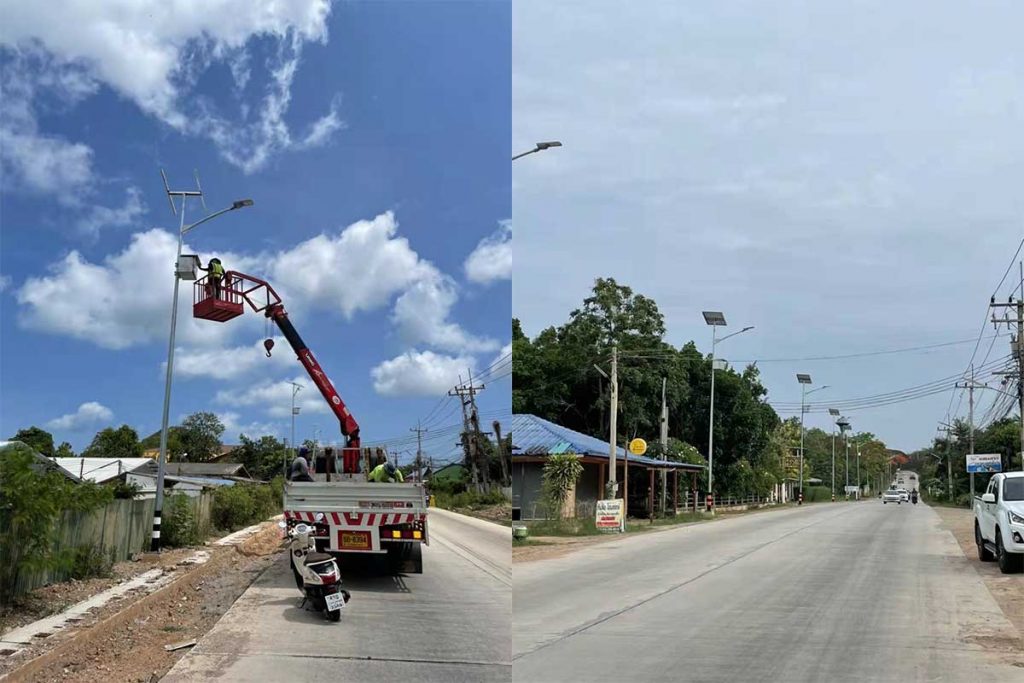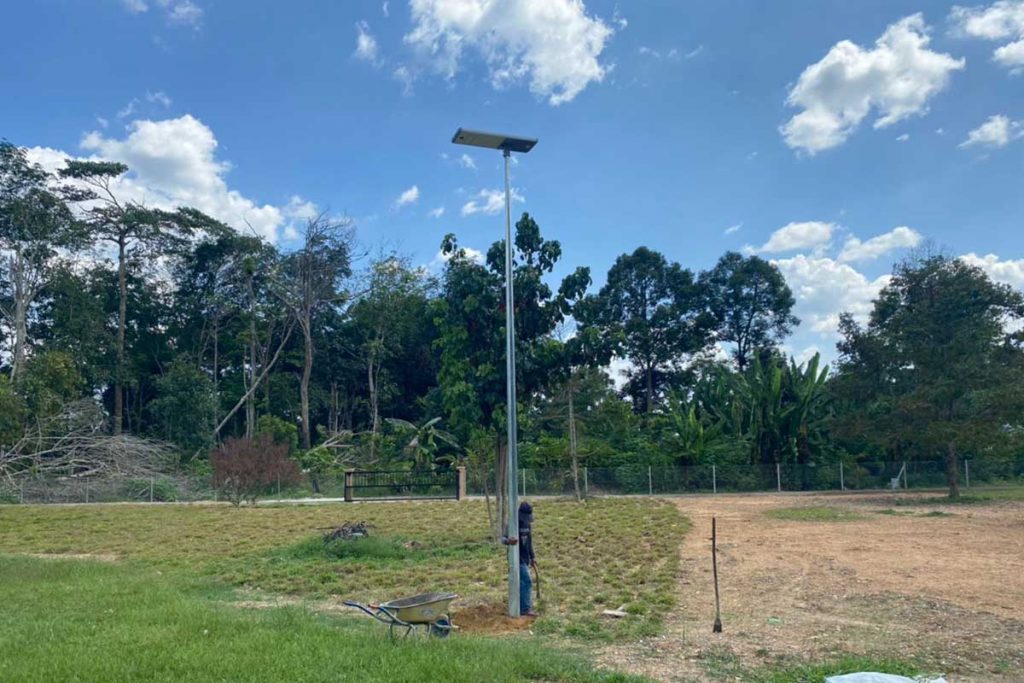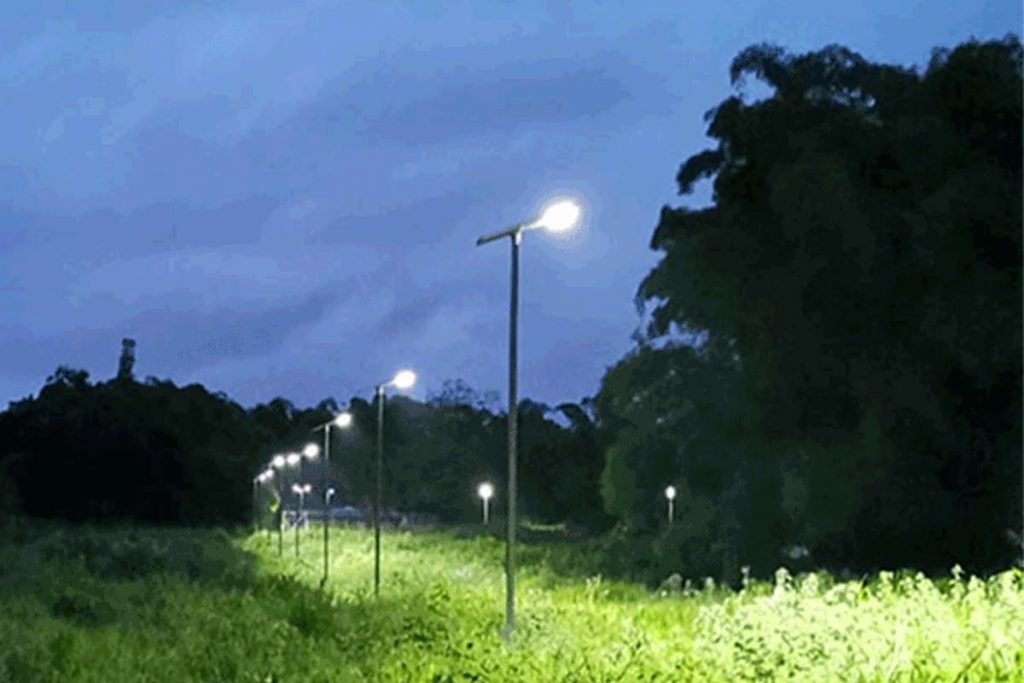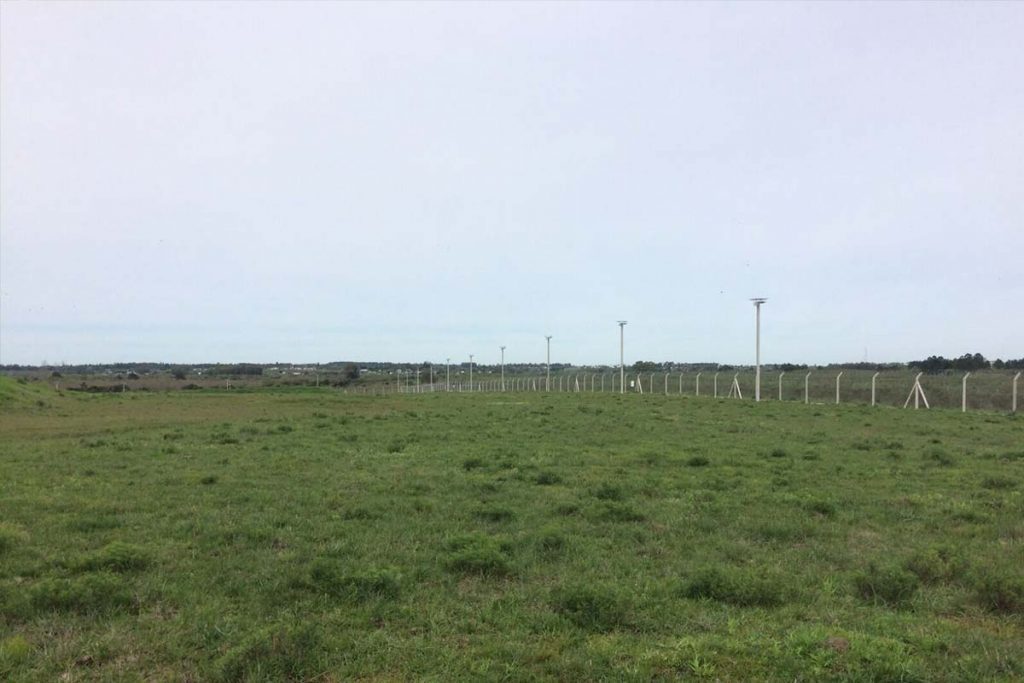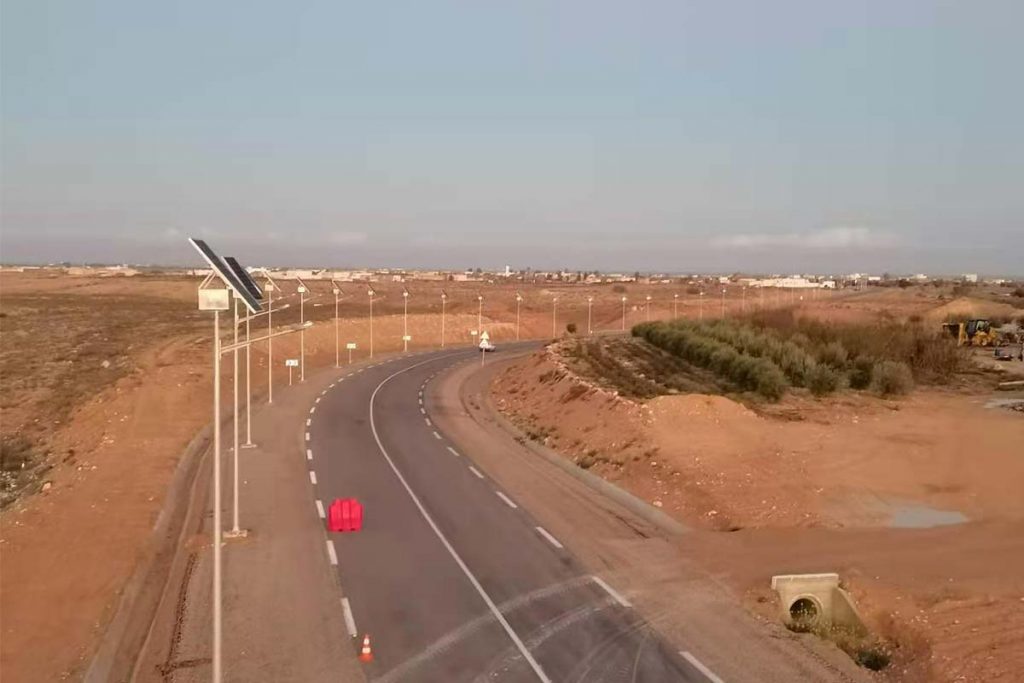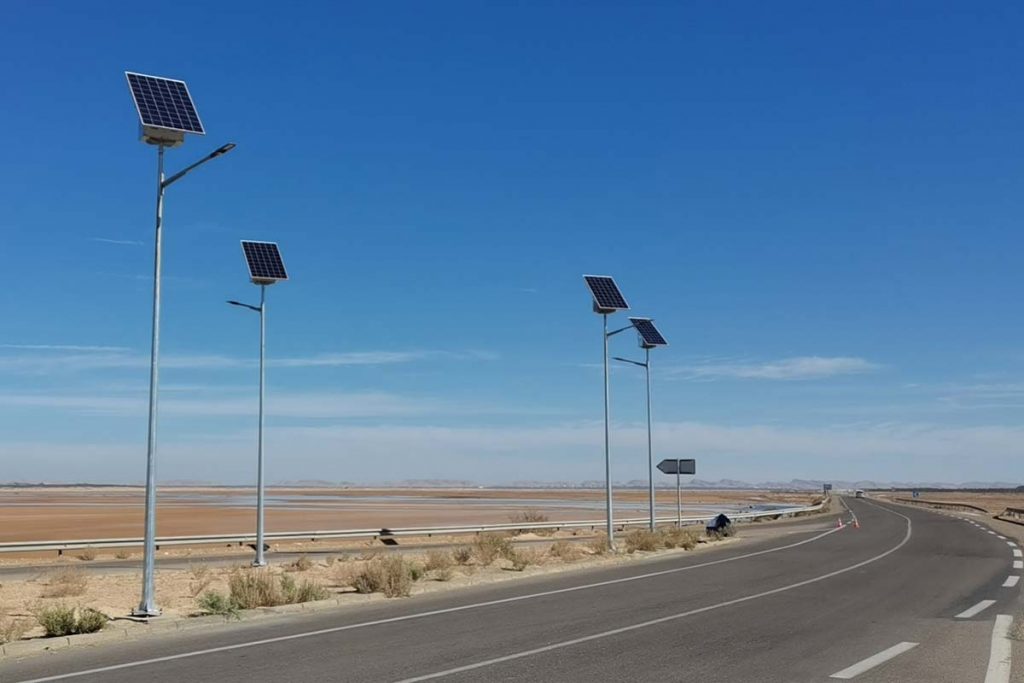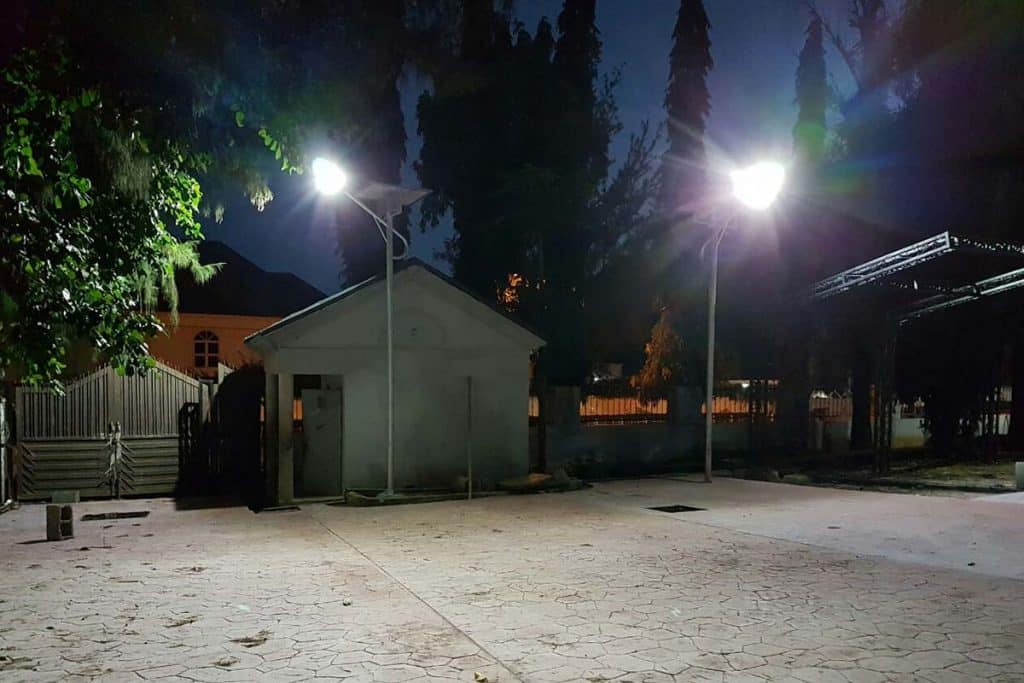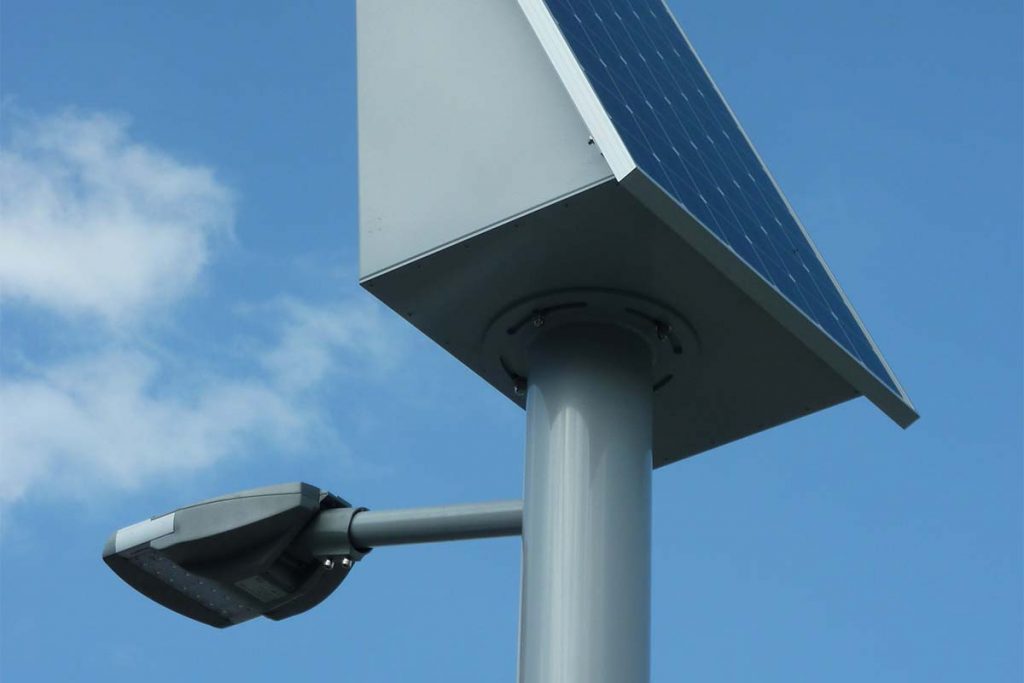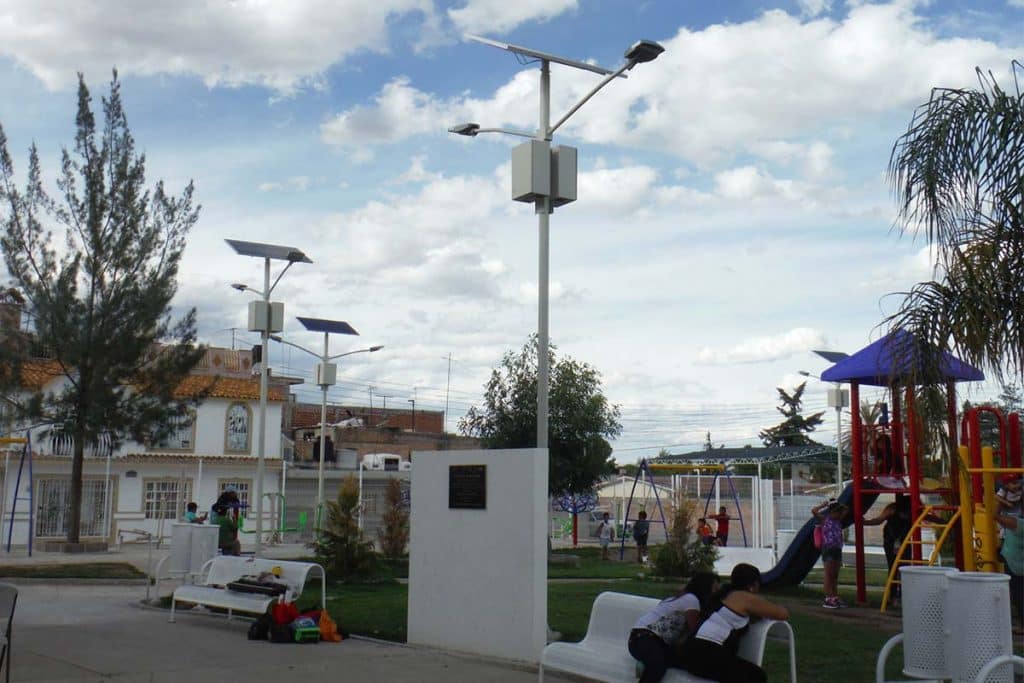Important parameters and calculations of solar street lighting systems
Important parameters and calculations of solar street lighting systems
Introduction
When we talk about the city at night, street lights on the road are an integral part. In recent years, the concept of green environmental protection has been increasingly popular among the public, and solar-powered street lights have attracted much attention. In order to ensure that these street lights can reliably illuminate the road at night, we need to consider several important parameters including the wattage of the street lights, photovoltaic panel power, battery capacity and controller stability. In this article, we will delve into these key components and parameters in street lighting systems ( Review the case study on the street light system for a residential road. ) to help you better design or choose efficient and sustainable solar street lighting systems. In our opinion, reliable solar street lights help illuminate the city at night, and they also meet the requirements of the green environmental protection trend.

Why we should pay attention to the parameters of solar street light systems?
The design and configuration of a solar street light system are key factors. It is related to whether the road can be illuminated reasonably and permanently. The wattage of the street light is related to whether the road can be illuminated, and its light efficiency refers to the efficiency of the street light in using energy. The power and type of solar panels are related to the energy collection capacity, that is, how long it takes to fully charge the battery with effective sunlight. The battery capacity and type should be related to whether the street light can be continuously driven during night lighting. The charge controller and lamp controller are directly related to whether the entire system can operate efficiently, stably and intelligently. These parameters and components of solar street lighting systems, if configured unreasonably, will affect the normal operation of solar street lighting systems. For example, a lamp with a wattage that is too small will result in a street light that cannot adequately illuminate the road, while a lamp that is too large may result in wasted energy. If the solar panel is too small, it cannot ensure that the light energy is collected in time and stored in the battery. If the battery capacity is too small, the street lights may not be able to meet energy needs at night, etc. On the contrary, a deep understanding of these parameters can help create efficient, rational and sustainable solar street light systems that provide reliable urban lighting.
Wattage and efficiency of LED street lights
The first step in designing a solar street light system is to find out the wattage and energy consumption of the LED street lights, as well as the energy consumption of other parts that require solar power, such as WiFi, cameras, etc. How to calculate the total energy consumption of your solar system? ZGSM believes that the following two main steps need to be followed: 1. Calculate the wattage/luminous flux of the lamp; 2. Calculate the power consumption of the lamp. The unit of the former is wattage, while the latter is watt-hour.
Determine the wattage of your street light
The wattage of the lamp is closely related to the lighting needs of the road, and whether it can be met depends on it. Customers usually specify the wattage parameter when requesting solar street lighting systems. As a professional street light supplier, we recommend using luminous flux as the main reference factor, because high-efficiency street lights can achieve the required luminous flux requirements with lower wattage. If a customer’s wattage request seems unreasonable, we should use lighting simulation to assist in determining the most appropriate fixture wattage. This is because too high a wattage will only lead to unnecessary waste of energy and may even cause light pollution problems. Additionally, high wattage increases the demands placed on batteries and solar panels by a solar system. Conversely, choosing the right wattage can make lighting more efficient and reduce battery and solar panel requirements.
Calculate total watt-hours per day for street light
The total watt-hours is the electrical energy consumed by solar street lighting system every day ( Click here, learn more about Smart solar street lighting with Zhaga Socket and LoRaWAN ), which directly affects the capacity of the battery and the power selection of the solar panel. To calculate the daily energy consumption (total watt-hours) of a street light, you need to know two main factors: the wattage of the fixture during different time periods and the number of operating hours during each time period. The formula for calculating the total watt-hours per day is as follows: Total watt-hours per day = Electricity consumption 1 (W) × Number of working hours in the first time period + Electricity consumption 2 (Watts) × Number of working hours in the second time period + Power consumption 3 (Watts) × Number of working hours in the third time period + … + Power consumption x (Watts) × Number of working hours in the xth time period ( View watts to lumens for LED lights. ). For example, assuming a street light with a wattage of 100W street light works 12 hours a day, with the first 6 hours working at 100% power and the last 6 hours working at 50% power, then the total daily watt-hours are calculated as follows: Total daily watt hours = 100W × 6 hours + 50W × 6 hours = 900 watt hours (Wh). The calculation results can be used in the following sections to determine the battery capacity and solar panel power required for the solar street light system.
Solar panel of solar street lighting systems – wattage and type
The size of solar panels required for a solar street light system depends on several factors, including two main factors: total watt-hours and local sunshine coefficient. Total watt hours is how much electricity your street lights use over the course of a day, which we detailed in the previous section. The local sunshine coefficient is related to the amount of sunlight available at the location of the street light. For example, when installing solar street lights in Saudi Arabia and Cameron, the choice of solar panels varies greatly. After checking, we learned that the effective sunshine duration in Saudi Arabia is 6.2 hours, while Cameroon only has 4.6 hours. For a street light that consumes 900WH, after calculation, the battery panel power required by the former =900*1.333/6.2=193.5 Wp, and the battery panel power required by the latter=900*1.333/4.6=260.8 Wp. From this we can conclude that the more sunlight there is, the smaller the solar panels you need and vice versa.
After the theoretical panel capacity is obtained, we calculate the actual required panel capacity. The capacity of solar panels provided by suppliers is often an integer, so I need to increase the calculation result to the next highest integer. For example, the calculation result is 193.5Wp, and our actual configuration is 200Wp. In addition, by installing higher-power photovoltaic modules, the overall system performance will be better and the battery life will be extended. If fewer PV modules are used, the system may not work at all on cloudy days and battery life will be shortened because the battery is in a drained state for a long time.
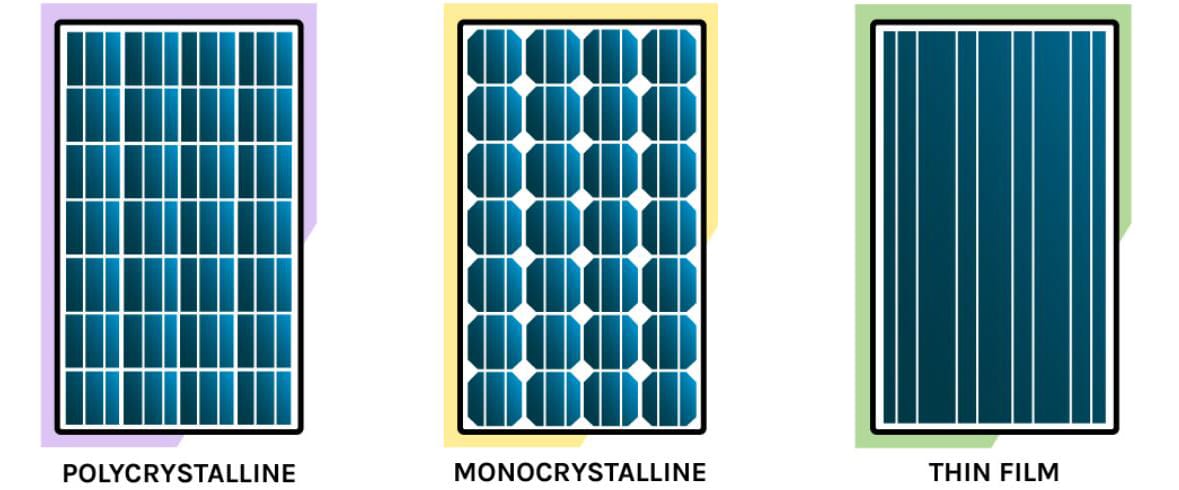
Battery of solar street lighting systems – capacity and type
The recommended battery type for use in solar photovoltaic systems is deep cycle batteries. Deep cycle batteries are designed for rapid charging after being discharged to low energy levels or for continuous charging and discharging for many years. The battery should be large enough to store enough energy to run the LED street light at night and on cloudy days. Solar street lighting systems usually use lead-acid batteries and lithium batteries (including LiFePO4). The former has low cost, short life, and low discharge depth, while the latter has relatively high cost, long life, good safety, and high discharge depth. Companies that calculate battery capacity are as follows:
Required battery capacity (Wh) = Total Watt-hours (per day) x Days of autonomy / 0.9 / Depth of discharge of deep cycle battery
For example, if the calculation result is a 1333WH battery, then for a 12V lead-acid battery, its capacity should be 111AH. For rounding, 120AH is generally selected for a 12V lead-acid battery, that is, 120Ah x 12V = 1440 WH > 1333 WH.
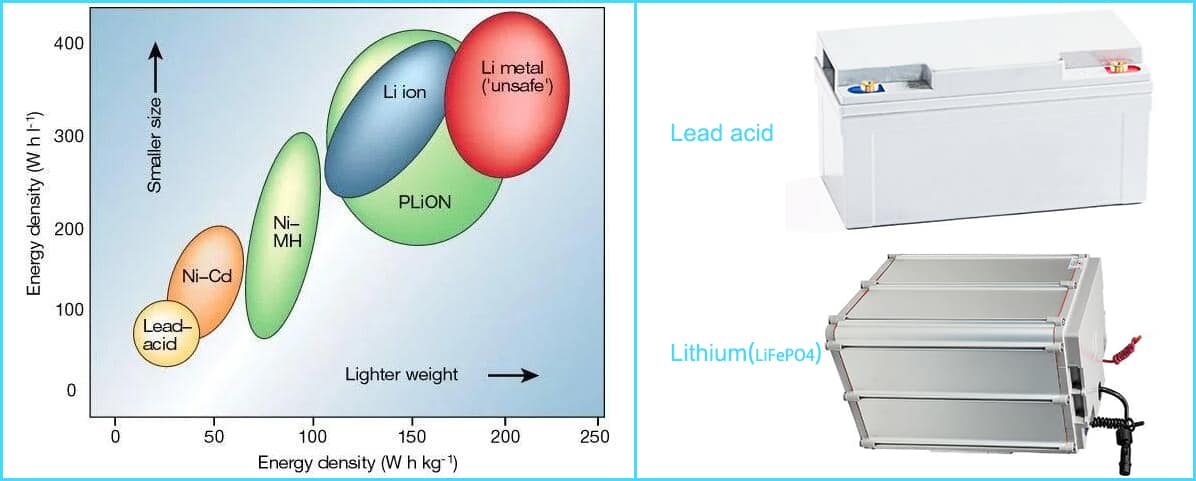
Controller of solar street lighting systems – calculation and type
In addition to components such as LED street lights, solar panels, and batteries, solar street lighting systems also require charge and discharge controllers to connect these components. The charge and discharge controller plays an important role in the system. It connects the solar panels and batteries, and also connects the batteries and LED street lights. The controller manages the charging of the solar panels to the batteries and the supply of power from the batteries to the street lights. The functions of the charge and discharge controller include ensuring that the battery is charged within a safe range and preventing overcharging or over-discharging, thereby extending battery life. Some controllers also integrate LED driving functions, which can convert 24V or 12V power into operating current suitable for LED chips. If this feature is not integrated, the system may require additional DC LED drivers to light the LED fixtures. ( Please review videos of integrated solar street light. )
In addition, solar controllers also have other functions, such as controlling the switch of LED lamps, adjusting the brightness of lamps, and equipped with sensors to achieve real-time dimming. Therefore, it can be said that the solar controller (MPPT/PWM) plays a key role in the system, connecting and coordinating the normal operation of various components of the system. Without it, the system may not function properly. It can be regarded as the core of the solar system, maintaining the stable operation of the entire system.
ZGSM case study of solar street lighting systems
Currently, our customer is working on a solar street light project. The customer requires the use of 80W street lights, which do not require sensors and use PWM dimming, but need to set time period dimming. The specific period-based work is as follows: the first period is 100% and continues to work for 4 hours; the second period is 30% and continues to work for 6 hours; the third period is 60% and continues to work for 2 hours. The project is located in the Mecca area of Saudi Arabia, where there is only one rainy day. The road condition is 7 meters wide, with sidewalks of 1.5 meters on both sides. The height of the light pole is 8 meters, the length of the cantilever is 1 meter, and the distance between the light pole and the curb is 0.5 meters, which meets the requirements of M4 lighting level. According to the lighting simulation results of ZGSM, it is shown that the 60W Falcon series is very suitable.
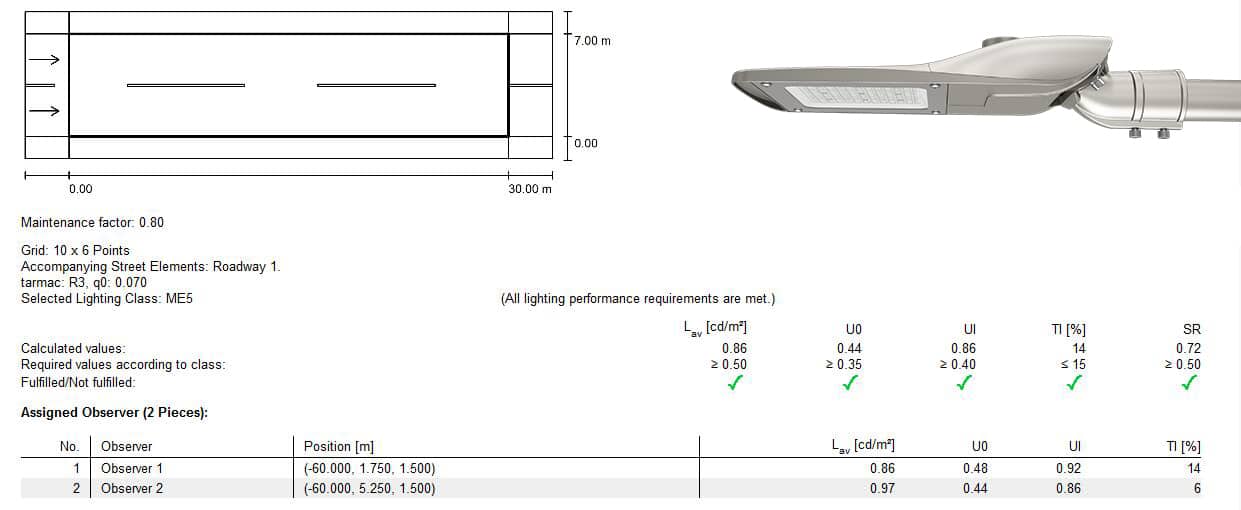
Watt-hours of street light
Based on the project conditions, we calculated the actual power consumption as follows: Total street light use = (60W x 4 hours) + (18 W x 6 hours) + (36 W x 2 hours) = 420 Wh/day, while based on customer’s requirement on wattage, the street light use= (80W x 4 hours) + (24 W x 6 hours) + (48 W x 2 hours) = 560 Wh/day. As we can see the result is 420Wh vs 560Wh, so there will be 75% saving on solar panel and battery.
Wattage of the PV panel
Based on the query that the effective sunshine hours in Mecca, Saudi Arabia are 6.17 hours, combined with the power consumption calculated previously, the total solar panel capacity needed is: Total Wp of PV panel capacity needed = (420 x 1.333) / 6.17 = 90.8 Wp. In this lighting calculation, 1.333 represents the efficiency of the MPPT charge and discharge controller. It can be considered that for every 100WH of solar energy converted, the controller itself will consume 33.3WH of energy. Based on the results, we can choose to install 1 pieces 100Wp solar panel module to meet the energy needs of the project.
Capacity of the battery
Depending on the project situation, here we provide two options for customers to choose from, namely lithium batteries and lead-acid batteries. Since the number of rainy days is 1 day, it’s 2 autonomy days. Total volume of the battery will be as follows: for lithium battery, battery capacity = Total street light use *2 / 0.8 / 0.9 = 1167 WH, while for lead acid battery, battery capacity = Total street light use *2 / 0.7 / 0.9 = 1333 WH. So the battery should be rated 12 V 100 Ah(lithium battery) or 12V 120 Ah(lead acid battery) for 2 day autonomy.
Solar charge controller selection
Based on the information provided in the previous sections, we have summarized the key parameters of the solar street lighting system, including the lamp power of 60W, the solar panel capacity of 100Wp, and the system voltage of 12V. Combined with the MPPT controller parameters, we can select the appropriate controller model as Tracer2610LPLI. If you want to choose a PWM controller or other brands of MPPT controller, please refer to the corresponding parameter table or contact us to get more information about the solar charge/discharge controller.
To summarize, the solar street light ( Watch the video of the All-in-One Solar Street Lamp ) configuration we got includes ZGSM-ST18-60S street light, 100Wp solar panel, 12V 100Ah lithium battery and 10A controller.
ZGSM solar street lights
As a professional manufacturer, ZGSM provides high-quality solar street lighting system for customers to choose from. At the same time, we have a professional design team, who can help to design and calculation of the solar street light ( Please review videos about Solar Powered Street Lights. ) as per client requirement. We can also provide lighting design, smart control and other sevices for solar solution. The picture below shows our product range.
| Performance summary of PV3 series |
| Initial Lumens: Up to 12300 lumens |
| Input Power: Up to 60W |
| Efficiency: 210lm/W |
| Battery option: 10AH, 20AH, 27AH, 40AH, [email protected] |
| Solar panel option: 50W, 70W, 100W |
| Application: Parking lot, Pedestrian Areas, Rural areas, Residential |
| Performance summary of PV4 series |
| Initial Lumens: Up to 4000 lumens |
| Input Power: 10W or 20W |
| Efficiency: 200lm/W |
| Battery option: 20AH, [email protected] |
| Solar panel option: 12W, 22W |
| Application: Garden, Small parking lot, Rural areas, Road in park |
| Performance summary of N series |
| Initial Lumens: Up to 8250 lumens |
| Input Power: Up to 50W |
| Efficiency: 180lm/W |
| Battery option: 212WH, 298WH, 426WH, 512WH |
| Solar panel option: 60W, 80W, 120W, 150W |
| Application: Rural areas, Main road, Urban areas, Industrial areas |
| Performance summary of Split solution |
| Initial Lumens: Customized as per request |
| Input Power: Customized as per request |
| Efficiency: Customized as per request |
| Battery option: Customized as per request |
| Solar panel option: Customzied |
| Application: Main road, Urban areas, Industrial areas, Perimeter |
Summary
This article aims to introduce the key parameters of the solar street lighting systems, including the power of the street light, the wattage of the solar panel, the capacity of battery, the solar charge and discharge controller and the street light controller. This article helps us understand what these parameters mean and why we need to care about them. By explaining the calculation methods of these parameters in detail, we will also deepen our understanding of these aspects. In addition, understanding these key parameters is also important in selecting a solar street light system suitable for a specific project. The solar street light system is an overall system, so we must reasonably calculate and select each parameter to ensure that the system operates at its best. These parameters are interrelated. If one parameter is selected unreasonably, it may cause the system to fail to work at its best or to operate normally. Please feel free to contact us for more relevant information.
Rated Products
Related Blogs
Related Cases
People also ask
Author introduction

Hello Customers,
My name is Taylor Gong, I’m the product manager of ZGSM Tech. I have been in the LED lights industry for more than 13 years. Good at lighting design, street light system configuration, and bidding technology support. Feel free to contact us. I’m happy to provide you with the best service and products.
Email: [email protected] | WhatsApp: +8615068758483

